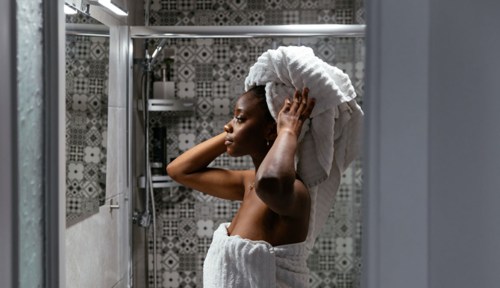Our editors independently select these products. Making a purchase through our links may earn Well+Good a commission
‘I’m a Celebrity Esthetician, and This Is the Only Time You Want Your Skin-Care Products To ‘Stingle”
A stingle is the level of sensation between a tingle and sting, which makes a big difference when it comes to skin care.

It’s not uncommon to be able to feel your skin-care actives doing their thing. Sometimes, that feeling is a sign your products are working, but other times, it’s a big red flag. According to celebrity esthetician Renée Rouleau, the difference between the two is a matter of severity. That’s why she coined the term “stingle”—which describes the level of sensation between a sting and a tingle—to clue you in on where what you’re experiencing falls on that spectrum.
Experts in This Article
esthetician and founder of Renée Rouleau Skincare
“Stingling feels like a mild prickling sensation, which makes the skin look and feel a bit flushed,” says Rouleau, who is also the founder of an eponymous skin-care line. “While it will go away on its own, it takes about 10 seconds to do so, which is about double the time of a tingling sensation.”
She explains that stingling is most likely to occur when you use exfoliating acids like alpha-hydroxy acids (AHAs) or beta-hydroxy acids (BHAs). When it happens within this context, it’s a good thing. “This includes glycolic, lactic, malic, or salicylic acid,” says Rouleau. “They work by lowering the skin’s pH, so a stingle can be expected as they do so.”
This Parisian Skincare Brand Is Launching in the United States for the First Time—Here’s What a Derm Wants You to Know

We’re Calling It: Cleansing Balms Are the Face Wash of the Future—Here Are 3 to Add to Your Cart

This Is the One Product That Scarlett Johansson Always Keeps in Her Purse and on Her Bedside Table

Know that as you get used to these ingredients, the stingling may go away. Take that as a good sign. “Sometimes an acid product that stingles at first use will go away over time,” she says. “This is because exfoliating acids help to repair the skin barrier, so as it becomes stronger, you’ll feel less of a sting. Never fall prey to the common myth that ‘if you don’t feel it, it’s not working.'”
Sometimes, though, your skin care can stingle for not-so-great reasons. “The product might not agree with your skin, which could be because of an irritating ingredient,” says Rouleau. “Products can also stingle when you have a compromised skin barrier, as they are getting closer to the deeper layer of skin.” In those cases, you may want to lower the amount of product you apply or how often you apply it so your skin can get used to it. But if you apply a product and feel more than a single, it may not be a current fit for your skin.
“If you’re reaching the stinging or burning level, the prickling sensation will feel more severe and can last for more than a minute,” says Rouleau. “You may also notice other symptoms, such as redness. Sometimes it will go away on its own, but often when it’s more than a stingle, you must wash off whatever product was applied that caused the reaction.”
Want even more beauty intel from our editors? Follow our Fineprint Instagram account for must-know tips and tricks.
Sign Up for Our Daily Newsletter
Get all the latest in wellness, trends, food, fitness, beauty, and more delivered right to your inbox.
Got it, you've been added to our email list.







